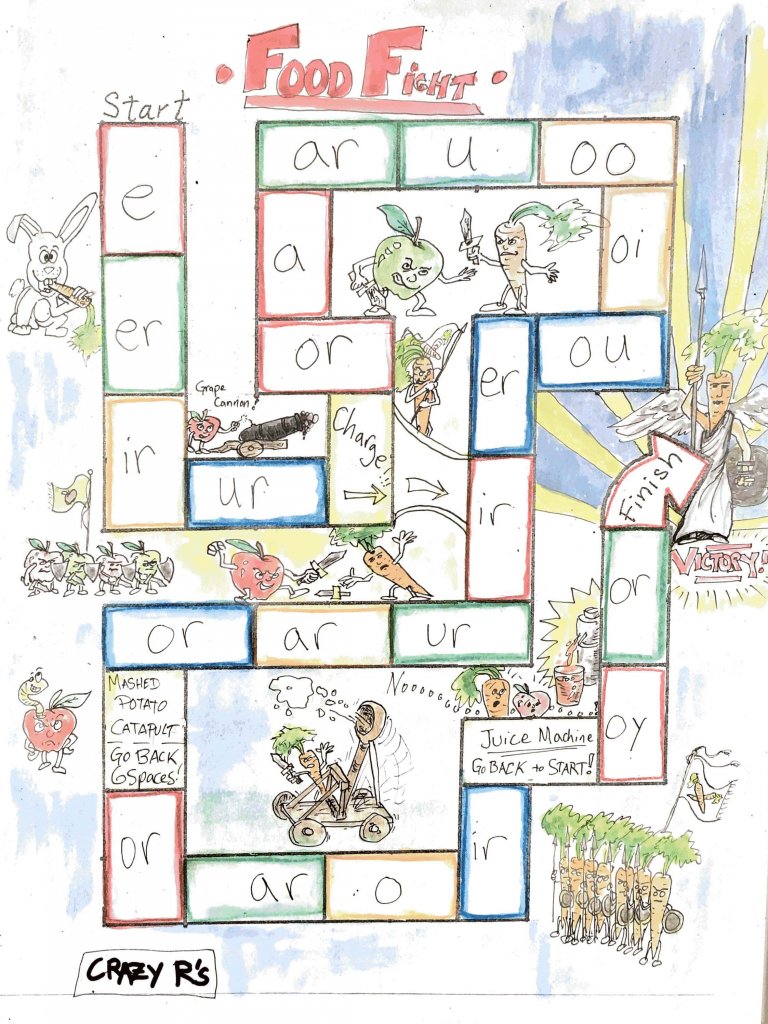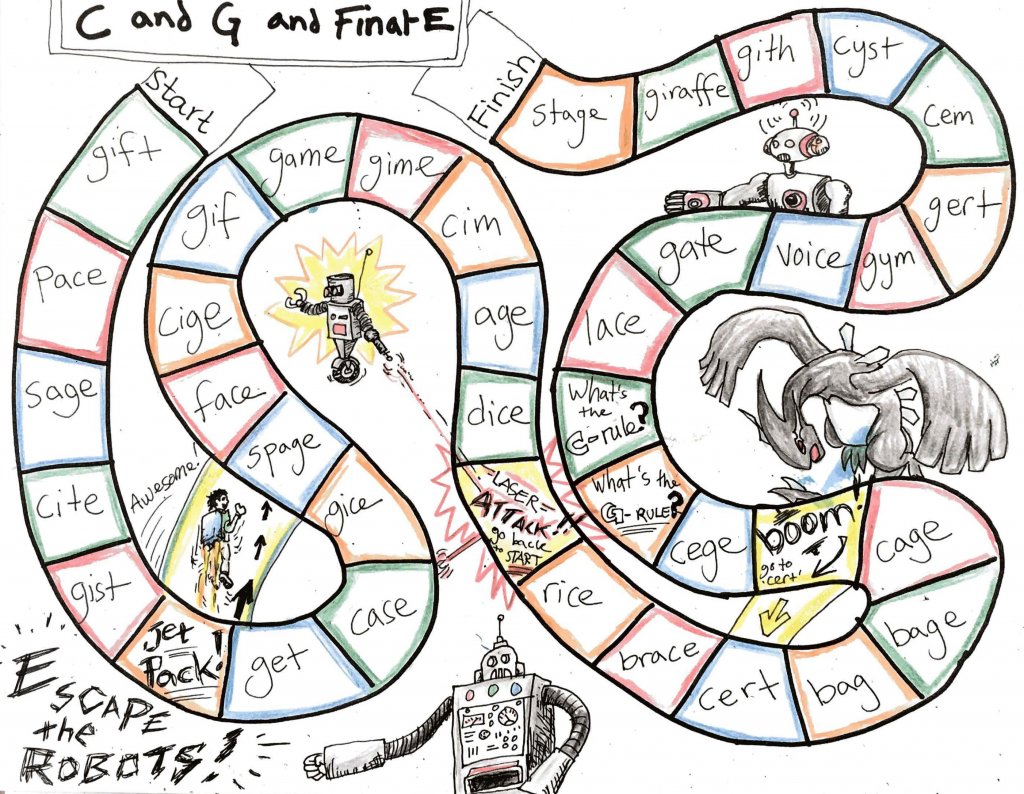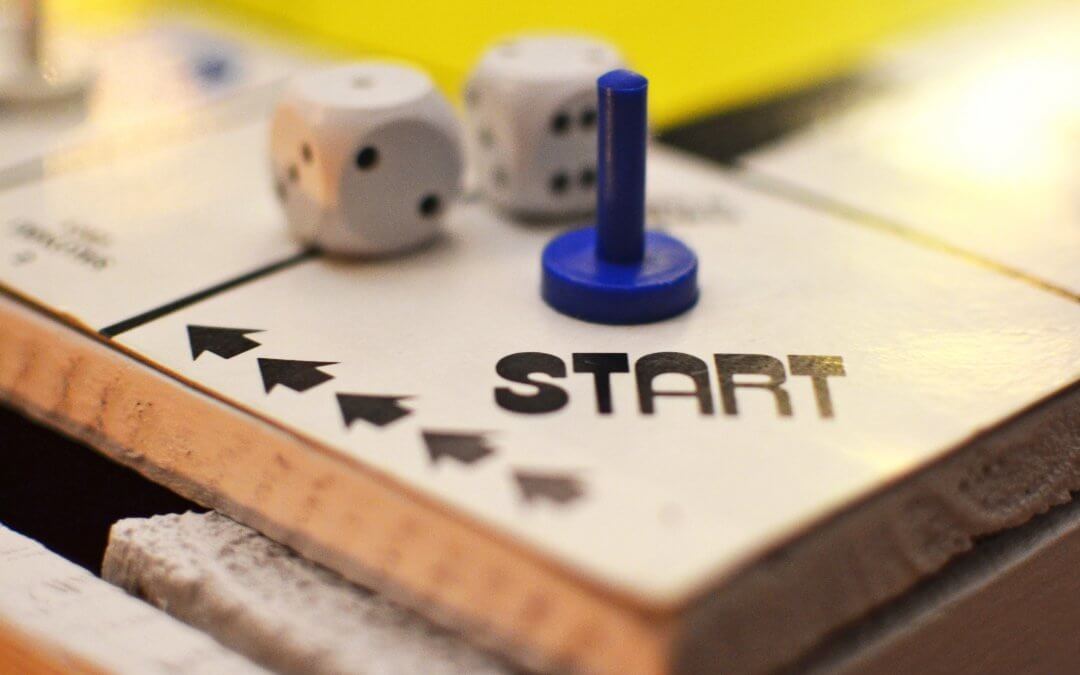Bored? Make a board game!
Let’s be honest: practicing difficult decoding and spelling skills can be boring, especially for the youngest students. Because of this, we use games to help break up more “serious” exercises and to keep students engaged. Some games we all know—such as tic-tac-toe—some we buy…and some we make ourselves! These include homemade board games.
But these games aren’t difficult to make! In fact, you can make them, too, following the easy steps below.
Click here to download a few of our blank game templates in PDF format.
Step 1: Make a basic board
While many of our homemade board games have their own unique paths—in squiggles or coils or concentric squares—we also have a template with a basic board drawn out, consisting of a simple path divided into squares. That way, we can grab a template with a student and make one on the spot if none of our usual games quite fit our learning goals or the student’s interests.
Step 2: Pick a theme
Are you trying to defeat the evil alien overlords? Running from the zombie apocalypse? Trying to get Little Red Riding Hood safely to her grandmother’s house? Picking a fun theme can help make the game feel, well, more game-like, and less like learning. It’s like hiding vegetables in brownies—tasty AND nutritious!
Step 3: Pick your learning goals
What skills are you trying to practice with this board game? We like to focus on one skill set at a time—the repetition of practice provided by the game is key to helping those skills stick. Our rule of thumb is that if you can do something correctly (spell a word, recall a definition) five times or more, you’ve mastered it.
Some examples of skills you can practice with a board game:
-
Decoding words (Reading)
- When two vowels go walking, the first one does the talking!
- The silent/ “bossy” E rule
- Words with more than one syllable
- Sight words
-
Encoding words (Spelling)
- Include a separate list of words corresponding to the spaces on the board that the student must spell correctly
-
Vocabulary practice
- giving the definition and using it in a sentence
-
Identifying parts of speech
Step 4: Decide on the rules
We generally follow a basic set of rules:
- Roll the dice
- Move your player piece the number of spaces you rolled
- Complete the task on that square (decode the word, give the definition)
- The first one to the end wins!
However, you can always spice it up a little!
- The player can only move to the next space if they successfully complete the corresponding task
- Steal the space! Allow the first person to correctly answer a question to take a space, either throughout the game, or on particular squares
- Add squares that make the player go back or shoot ahead!
Step 5: Decorate!
Get your game-player engaged by having him or her help you draw and/or color the decorations on the board game!
What are your favorite educational games?
Here are a few examples of our own homemade board games!

Artwork credit: Tim Ballard

Artwork credit: Tim Ballard



Recent Comments